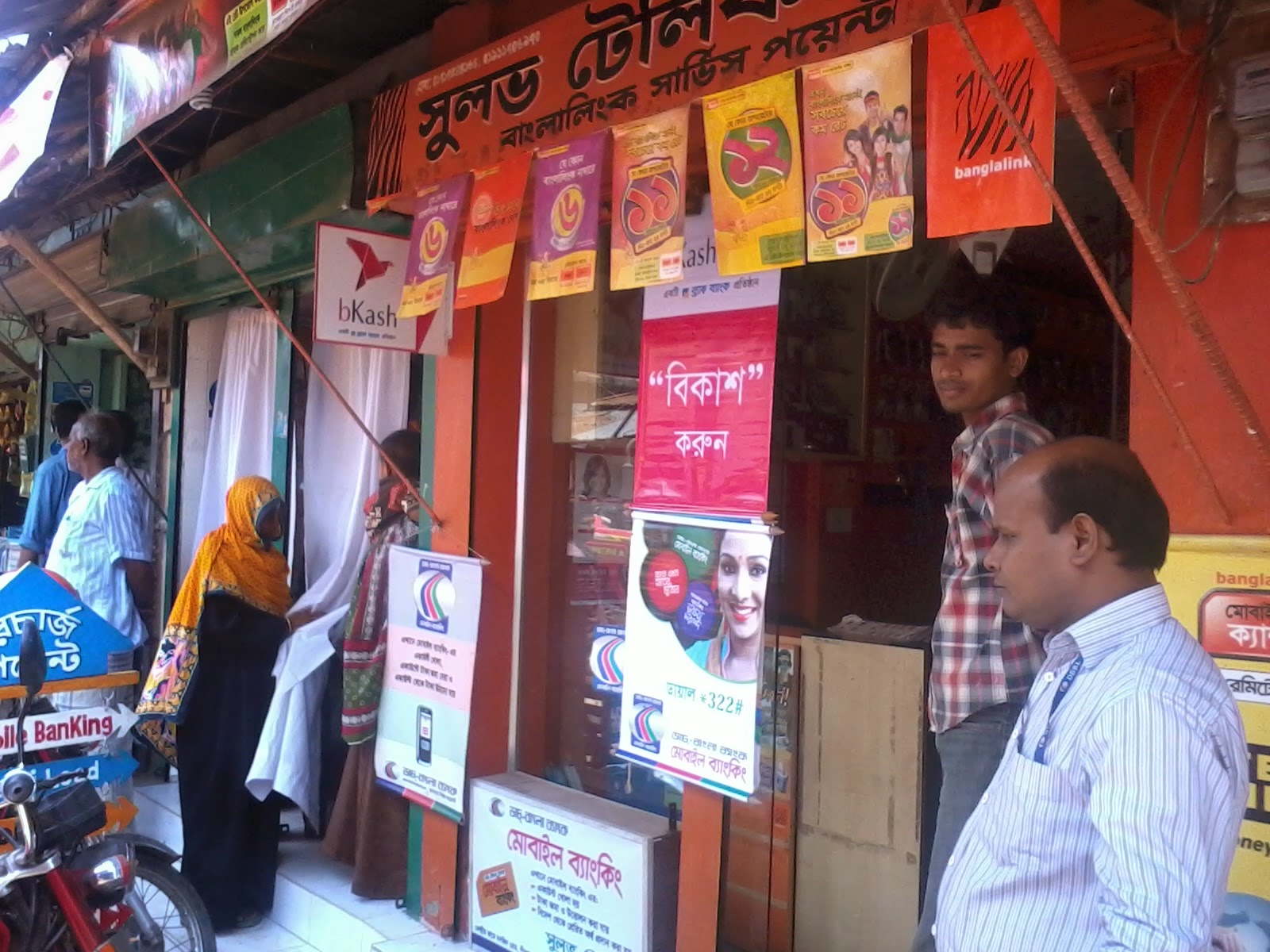Written by
Abul Kashem Md Shirin
Published by
In the book entitled:
The Article:
On the other hand, the traditional banking is costly
for the customer. The customers need to pay enormous bank charges. The
customers also need to maintain a handsome amount of minimum balance in his bank account. Moreover,
most of the rural peoples are not educated and thus can’t write check and sign
on it.
It was therefore
a requirement that there is a banking system where the customers can transact
from their home in the rural area, pay less charges for banking, and can use
their mobile phone to pass the transaction typing a secret PIN (instead of
signing on a check). More than 100 million people out of a total of nearly 160
million people of the country use mobile phone.
In absence of an appropriate system to address all
the above issues, the rural people were always remained outside the banking
facility. Until 31 May, 2011, there were no means and ways to deliver banking
services to the rural poor people of the country.
|
A Mobile Banking Agent
Point
|
The Mobile Banking is a
revolution in Bangladesh. Now the number of people who knows the words “Mobile
Banking” is more than the number of the peoples who knows the words “Savings
Account”. Within next 2-3 years, there will be more Mobile Banking accounts in
Bangladesh than the traditional bank accounts.
As per the Central Bank of
Bangladesh, till March, 2014, the number of the registered mobile banking
customers is 15.0 million and the number of Agents offering mobile banking
services on behalf of Banks from their own shops in the rural area is 293,000,
which is more than the outlets of the existing traditional banking system in
Bangladesh. The value of mobile banking
transactions stood at Taka 79.00 billion (approx. USD 1.0 billion) in March,
2014 which constitutes:
a)
Cash-in (cash deposit)
b)
Cash-out (cash withdrawal)
c)
Cardless ATM withdrawal
d)
Disbursement of foreign
remittance/salary
e)
Air-time top-up (mobile recharge)
f)
Person-to-Person (P2P) fund
transfer
g)
Merchant Payment (payment after buying goods
from a shop)
h)
Utility bills payment (such as tuition fee,
insurance premium, electricity/gas/water bill)
i)
Collection (collection of
distributor’s payment by a principal company before delivery of goods to its
distributors).
|
Disbursing government salary through
Mobile Banking
Union Parishad
(UP) is a local government body located in the rural area and constituted
by a few villages. There are elected Chairman and Members and appointed
secretary, Chowkidars and Dofadhars in each of the UP. The respective
district offices are responsible for disbursing their salary on bi-monthly
basis. On the date of salary the UP staffs need to spend one or two working
days travelling up to 100 km to collect their salary. A large part of their
salary was spent in travelling, accommodation and food during collection of
their salary from the district head quarter. There was involvement of risk
also while they were travelling with cash. The process makes the UP staffs
to spend their office time and hard-earned money, and also invites risks of
loss of their money.
DBBL’s
Mobile Banking has removed all these barriers for the UP staffs in Sylhet,
Sunamgonj and Jamalpur districts. The district authorities disburse the UP
staff salary through DBBL mobile banking every month and the UP staffs
withdraw their money from their nearest DBBL mobile banking agents. DBBL
has more than 80,000 agents all over the country. The UP staffs now get
monthly salary instead of bi-monthly, they don’t need to travel up to 100
Km, and spend lot of time and money. They can now utilize more time in
their office.
|
There are millions of shops in
the rural area, sale proceeds of which are kept at shop or home. Thus a huge
amount of money remains ideal. Money at home or shop is not secured.
If all these people and their
money can be brought into mobile banking channel, there will be a huge
revolution in terms of financial inclusion and economic activity.
Mobile Banking in Bangladesh
is an affordable technology to achieve this goal. Any low cost basic mobile
phone can be used to access mobile banking system of a bank using USSD (Unstructured
Supplementary Service Data) connectivity of their respective mobile
operators.
In Bangladesh, only Bank-led model of mobile banking is allowed. Bank-led models allow
a prudent, regulated and mature approach to banking. While Bank-led models are
winning overwhelmingly in almost all countries, the non-bank led model exists
in few undeveloped countries.
Peoples of Bangladesh,
although less literate, are accepting the technology enormously. Government of
Bangladesh including the Central Bank and BTRC (Bangladesh Telecom Regulatory
Commission) is unanimously supporting the technology by formulating various
policies & regulations and promoting by arranging seminars, symposium and
talk shows on the subject matter.



